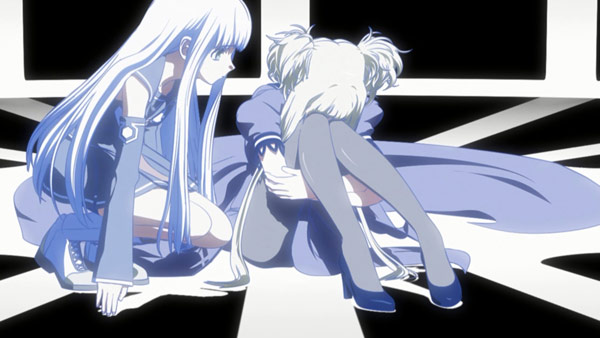Here they are, dear readers: all 44 series we watched this year (five dropped), ranked by their cumulative ratings as of today. Seven Fall shows still have one episode to go this year, so we’ll update this list as we complete them.
We’ve also included what the thousands of denizens over at MyAnimeList (MAL) thought about these same shows (again, as of today). One of the reasons we switched to a 10-point rating scale is so we could roughly compare our ratings to MAL’s.
Analysis: While we’ve always thought we had a tendency to overrate things, we actually gave 21 non-dropped shows lower ratings than MAL, while rating 18 shows higher.
Our ratings actually came quite close to MAL’s—within 0.4 points or less—on a dozen shows:
- Kimi no Iru Machi (+0.020)
- Amnesia (+0.077)
- OreShura (+0.082)
- Tamayura: More Aggressive (+0.177)
- Maoyuu Maou Yuusha (+0.217)
- Kyousougiga (+0.310)
|
- Free! (-0.013)
- Nagi no Asukara (-0.177)
- Oreimo 2 (-0.242)
- Vividred Operation (-0.273)
- Tamako Market (-0.320)
- Kakumeiki Valvrave 2nd Season (-0.375)
|
MAL also agreed with us that Valvrave’s second season has been better than the first.
The biggest outliers (not counting dropped shows) were Aku no Hana (we rated it 1.358 points higher than MAL), and The Unlimited (we rated it 1.290 points lower than MAL). There’s a good reason for each: Aku was incredibly polarizing, while The Unlimited likely went over better for those familiar with the Zettai Karen Children universe (which we weren’t).
In all, we were off of MAL’s scores by +/- 1 full point or more on only six non-dropped shows. By no means do we strive to match the average consensus from MAL (we just looked them up today), but it’s fun to compare, and it’s good to know we’re not totally insane about our taste in anime. We may be way off the consensus on a few occasions, but that comes down to personal preference, which is unique to everyone.
Finally, we decided to write a haiku either summarizing the show or our impressions of it…with, er, varying results. Enjoy, and Happy Holidays!
Guy turns into dog
Become’s favorite author’s pet,
who then tortures him.
Final Cumulative Rating: 5.000 (scissored after 5 episodes)
MyAnimeList Score: 6.74
Trio of heroes
in a real-life MMO;
Low rent SAO?
Final Cumulative Rating: 5.667 (logged off after 3 episodes)
MyAnimeList Score: 8.08
Powerful vampire
meets pretty young sword shaman
Childhood friend jealous.
Final Cumulative Rating: 5.714 (struck after 7 episodes)
MyAnimeList Score: 7.67
Follows adventures
of radiation-proof girls
icing stealth bombers.
Final Cumulative Rating: 6.000 (copped out after 4 episodes)
MyAnimeList Score: 6.74
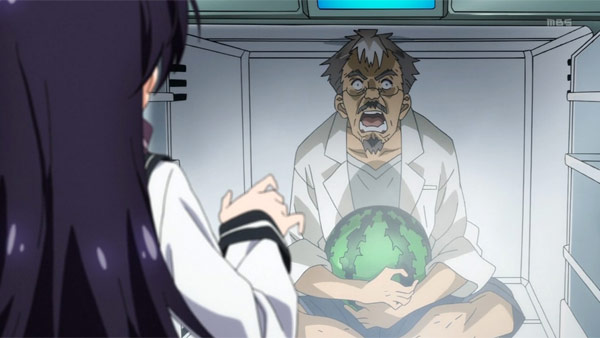
Color-coded girls
with cool CG mecha suits
Lots of booty shots
Final Cumulative Rating: 6.417
MyAnimeList Score: 6.69
Really long-lived dude,
bad guy from the older show,
main character here.
Final Cumulative Rating: 6.500
MyAnimeList Score: 7.79
Kids form a nation,
vampire mecha pilots,
screwed at every turn.
Final Cumulative Rating: 6.583
MyAnimeList Score: 7.44
High hopes for this show
after Hoshi no Umi.
Huge disappointment.
Final Cumulative Rating: 6.600 (panty-shot down after 10 episodes)
MyAnimeList Score: 7.51
High school whodunits
Demonic bear and pink blood
Hope versus despair
Final Cumulative Rating: 6.615
MyAnimeList Score: 7.56

Heroine gets lost
jumping back and forth through time
Is caged at one point.
Final Cumulative Rating: 6.667
MyAnimeList Score: 6.59
Better than OP
Better than “love club” premise;
Better than rating!
Final Cumulative Rating: 6.692
MyAnimeList Score: 7.67
World War II vessels
Pretty girl avatars
Ample explosions
Final Cumulative Rating: 6.727
MyAnimeList Score: 7.69
Office slice-of-life
Long-named lovable she-goof
Tacked-on imouto
Final Cumulative Rating: 6.769
MyAnimeList Score: 7.93
Underachievers,
armed with shiny new mecha,
proceed to kick ass.
Final Cumulative Rating: 6.917
MyAnimeList Score: 7.52

Three social outcasts,
linked by a car accident
Snappy dialogue.
Final Cumulative Rating: 6.923
MyAnimeList Score: 8.05
Weird conceited bird
Lovely lived-in market town
Slice-of-life done right.
Final Cumulative Rating: 7.000
MyAnimeList Score: 7.32
Otaku vamp boss
Human girl turns into ghost
He vows to save her.
Final Cumulative Rating: 7.000
MyAnimeList Score: 7.74
Guy moves to Tokyo,
dumps new girlfriend for his ex.
A bit of a cad.
Final Cumulative Rating: 7.250
MyAnimeList Score: 7.23
Light music club formed
Love triangle formed with it
One girl cut in line
Final Cumulative Rating: 7.333
MyAnimeList Score: 7.98

Railgun in too deep
Fights city’s dark underside
Gets help from her friends
Final Cumulative Rating: 7.333
MyAnimeList Score: 8.27
Safe on neutral moon
Then things get complicated
Lots of people die
Final Cumulative Rating: 7.455
MyAnimeList Score: 7.83
Fresh take on harem
Girls have good motivations
Nice pastel palette
Final Cumulative Rating: 7.462
MyAnimeList Score: 7.38
Goddesses in girls
Gamer must reconquer hearts
Third time is the charm
Final Cumulative Rating: 7.500
MyAnimeList Score: 8.52
Kirino returns
Kyousuke dates the black cat
Then “marries” sister.
Final Cumulative Rating: 7.538
MyAnimeList Score: 7.78

Shy god-vessel girl
Her reluctant protector
A quiet romance
Final Cumulative Rating: 7.583
MyAnimeList Score: 6.73
Town under the sea
Four struggle with their feelings
As their world’s end nears
Final Cumulative Rating: 7.583
MyAnimeList Score: 7.76
Devil comes to earth
Gets a fast-food part-time job
Comedy ensues
Final Cumulative Rating: 7.615
MyAnimeList Score: 8.16
Girl starts photo club,
which only has two members,
including herself.
Final Cumulative Rating: 7.667
MyAnimeList Score: 7.49
Demon King’s a girl
She and Hero join forces
Great allegories
Final Cumulative Rating: 7.667
MyAnimeList Score: 7.45

Girl joins war games club
Has a knack but grows obsessed
Alienates friends
Final Cumulative Rating: 7.692
MyAnimeList Score: 6.76
Cat finds self; time travel
Snake god; the darkness comes
Deceiving a god
Final Cumulative Rating: 7.909
MyAnimeList Score: 8.67
Amaterasu
Stuck inside a listless girl
Wants a normal life.
Final Cumulative Rating: 7.917
MyAnimeList Score: 6.81
Cast is mostly male
Swim club returns to glory
KyoAni trolling?
Final Cumulative Rating: 7.917
MyAnimeList Score: 7.93
Karuta battles
heat up exponentially,
much to our delight.
Final Cumulative Rating: 8.042
MyAnimeList Score: 8.67
The Top 10

Shy girl can read minds
Finds someone suited for her
Doesn’t ruin it.
Final Cumulative Rating: 8.083
MyAnimeList Score: 7.40

Social media
Very cheerful heroine
A whimsical romp
Final Cumulative Rating: 8.250
MyAnimeList Score: 7.58

A hero rises
Bad guys get more outrageous
Never accept evil
Final Cumulative Rating: 8.182
MyAnimeList Score: 7.28

Earth one big ocean
Space pilot and his mecha
Fish out of water
Final Cumulative Rating: 8.308
MyAnimeList Score: 7.81
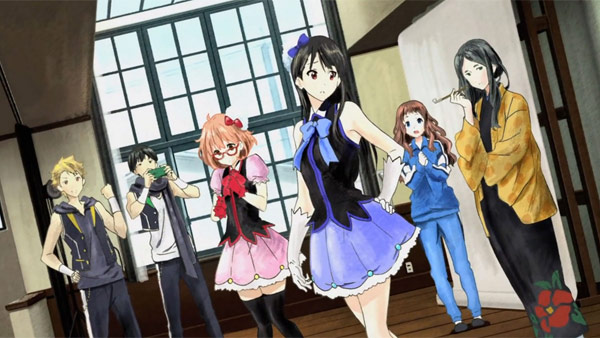
Girl with cursed blood
Half-demon half-human guy
Fall for each other.
Final Cumulative Rating: 8.333
MyAnimeList Score: 7.83

A fantastic world
A tale of love and rebirth
of one family.
Final Cumulative Rating: 8.400
MyAnimeList Score: 8.09

To avenge her dad,
girl dons a strange uniform
Powerful weapon.
Final Cumulative Rating: 8.500
MyAnimeList Score: 8.04

Guy has amnesia,
forgets old love, finds new one…
Then he remembers.
Final Cumulative Rating: 8.500
MyAnimeList Score: 7.99

When he’s caught with shorts
Girl makes guy contract with her
Deviant within.
Final Cumulative Rating: 8.538
MyAnimeList Score: 7.18

Tale of redemption
A family of tanukis
With “idiot blood”
Final Cumulative Rating: 8.769
MyAnimeList Score: 8.13
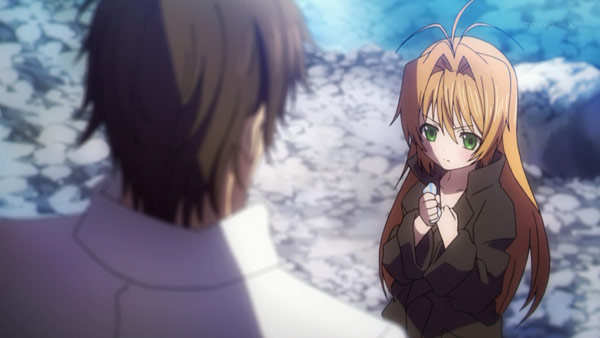








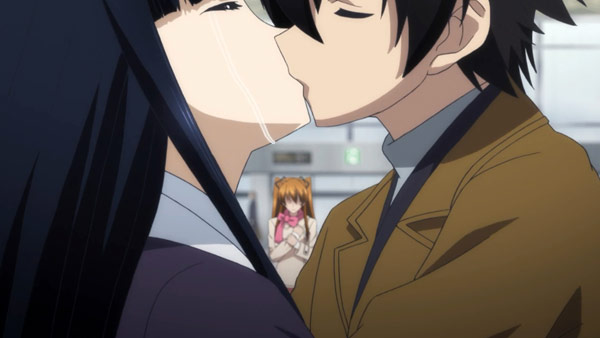





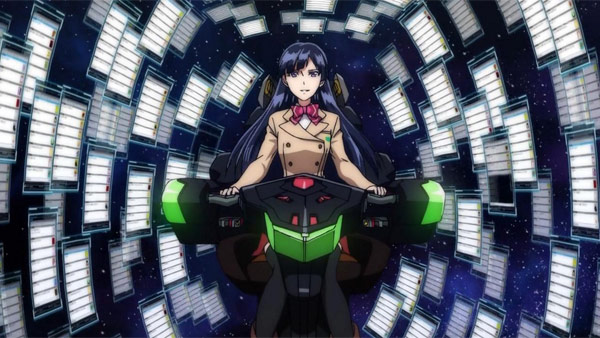

















 Bell Hydra (
Bell Hydra ( Chamber (
Chamber ( Ebisugawa Kaisei (
Ebisugawa Kaisei ( Gokou Ruri (
Gokou Ruri ( Goto Hidenori (
Goto Hidenori ( Hayashida “Linda” Nana (
Hayashida “Linda” Nana ( Kaga Koko (
Kaga Koko ( Kaiki Deishu (
Kaiki Deishu ( Katsuragi Keima (
Katsuragi Keima ( Kotoura Haruka (
Kotoura Haruka ( Mankanshokou Mako (
Mankanshokou Mako ( Nakamura Sawa (
Nakamura Sawa ( Nana (
Nana ( Shimogamo Yajirou (
Shimogamo Yajirou ( Wakamiya Shinobu (
Wakamiya Shinobu (